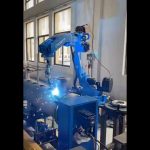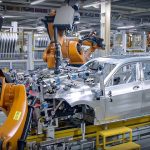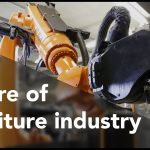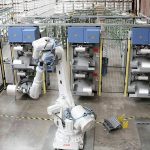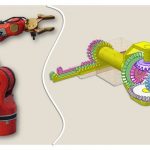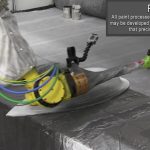Robotic Manufacturing: How Robots Are Made and How They Work
Introduction
The future of manufacturing lies in robotics. As we move towards a more technologically advanced era, robotics is set to play a significant role in various industries. In this article, we will explore the fascinating world of robotic manufacturing, discussing how robots are made, how they work, and what exactly robotics is all about.
What is Robotics?
Robotics is a field of technology that focuses on the design, construction, and operation of robots. These robots are programmable machines that can carry out tasks autonomously or with minimal human intervention. They are equipped with sensors, processors, and actuators, enabling them to perceive the environment, make decisions, and perform physical actions.
How Robots Are Made
The process of creating robots involves a combination of mechanical engineering, electronics, computer science, and artificial intelligence. Let’s take a closer look at the steps involved in making a robot:
1. Design and Conceptualization: This is the initial stage where engineers come up with the concept and design of the robot. They consider factors such as the intended purpose, size, shape, and the type of tasks the robot will perform.
2. Mechanical Construction: The mechanical components of the robot, including the body, limbs, joints, and gears, are manufactured and assembled. Materials such as steel, aluminum, and plastic are commonly used for construction.
3. Electrical and Electronic Systems: The electrical and electronic systems of the robot are built, including the power supply, wiring, sensors, and actuators. These systems enable the robot to interact with its environment and carry out specific tasks.
4. Programming and Software Development: Robots are programmed using specialized software that allows them to perform various functions. Programmers write code to control the robot’s movements, responses, and decision-making capabilities.
5. Testing and Quality Assurance: Once the robot is constructed and programmed, it undergoes rigorous testing to ensure its functionality and performance. This includes testing its movements, sensors, and response accuracy.
How Robots Work
Robots work through a combination of hardware and software components that enable them to perform tasks. Here’s a breakdown of how robots work:
1. Perception: Robots use various sensors, such as cameras, infrared sensors, and touch sensors, to perceive their surroundings. These sensors collect data and send it to the robot’s central processing unit (CPU).
2. Processing and Decision Making: The CPU processes the data received from the sensors and makes decisions based on predefined algorithms and programming. This allows the robot to analyze its environment and determine the appropriate actions to take.
3. Actuation: Once the robot has made a decision, it uses its actuators, such as motors and pneumatic systems, to carry out physical actions. These actions can range from simple movements to complex manipulations.
4. Feedback and Learning: Robots can also learn and improve their performance over time. Through machine learning algorithms, they can adapt to changing environments and optimize their actions based on feedback received.
The Future of Robotic Manufacturing
Robotic manufacturing is revolutionizing the way products are made. With advancements in technology, robots are becoming more intelligent, versatile, and efficient. They can perform tasks with precision and speed, resulting in increased productivity and cost savings for industries.
Robotic manufacturing offers several advantages, including:
1. Increased Speed and Efficiency: Robots can work continuously without the need for breaks or rest, leading to faster production cycles and increased efficiency.
2. Improved Quality and Accuracy: Robots can perform tasks with high precision, ensuring consistent quality and reducing the margin of error.
3. Enhanced Safety: Robots can handle dangerous and repetitive tasks, reducing the risk of injuries to human workers.
4. Cost Savings: Although the initial investment in robotic systems can be significant, the long-term cost savings can be substantial due to reduced labor and increased productivity.
Conclusion
The future of manufacturing lies in robotic manufacturing. As robots become more advanced and capable, they will continue to reshape industries and improve production processes. From the design and construction of robots to their working mechanisms, the world of robotics is a fascinating one.
So, if you are looking for innovative solutions in the field of manufacturing, consider exploring the possibilities of robotic manufacturing. Check out the leading manufacturers in the industry who can provide you with professional solutions tailored to your specific needs.
Check the coil packing solution with leading manufacturers for professional solutions right here. Industrial Robot
Exploring the Fascinating World of Robotics: Unveiling the Making and Functionality of Robots and Robotic Manufacturing

